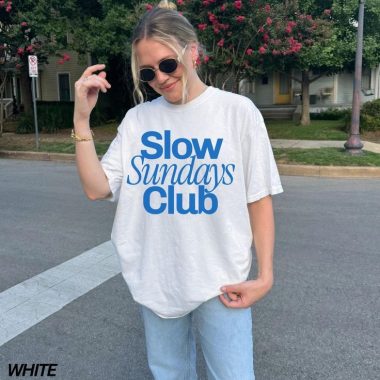Introduction
Fashion is far more than a mere assortment of fabrics stitched together. It is an ever‑changing narrative that intertwines art, culture, technology, and personal identity. At its core, fashion reflects our collective history and our individual journeys, revealing how societies have grown, adapted, and innovated over millennia. In this expansive discussion, we will delve deeper into the origins of clothing, examine the myriad ways fashion expresses cultural identity, explore the intimate dance between attire and self‑perception, investigate the technological revolutions that continually reshape our wardrobes, confront the ethical imperatives driving sustainable movements, and peer into the future vistas where digital and tangible styles converge.
Primitive Beginnings and the Birth of Adornment
Long before runways and couture houses, early humans learned to drape themselves in hides and woven grasses to shield against the elements. Functionality reigned supreme, but even in these primal garments lay seeds of self‑expression. Shells, seeds, and pigments were strung, tied, or painted onto clothing and bodies as talismans or status symbols. With the dawn of settled communities, textiles emerged: flax and wool turned thread. The ability to spin and weave marked a profound technological and social leap, enabling garments not only to protect but also to communicate. Patterns began to signify tribe or rank, and the choice of color hinted at wealth—only with access to certain dyes or trade routes could one don a particular hue. In these simple weaves and dyes, the narrative of fashion’s dual nature—functional and expressive—first took shape.
Honoring Tradition: Garments as Cultural Chronicles
Across continents, traditional apparel serves as living history. In the highlands of Central Asia, ornate embroidery recalls ancestral myths and clan ties through geometric motifs passed down through generations. In West Africa, vibrant wax prints pay homage to cosmology and folklore, each pattern named and storied. The Japanese kimono evolved from utilitarian robes to a highly codified dress language, its sleeves, collars, and colors reflecting seasons, marital status, and even age. Such vestments are not stagnant relics but dynamic symbols: modern artisans often reinterpret centuries‑old techniques, merging them with contemporary silhouettes. Through these dialogues between past and present, fashion both preserves heritage and evolves cultural identity.
Fashion as a Canvas of Personal Narrative
While collective heritage informs overarching styles, fashion’s ultimate power lies in its capacity to tell individual stories. Each morning’s reflection in the mirror presents a choice: what narrative will I share with the world today? A tailored suit may convey professionalism and precision; a flowing dress might evoke romance or freedom; distressed denim and bold graphics could project rebellion or raw creativity. Accessories—scarves, hats, jewelry—act as punctuation marks, accentuating or subverting expectations. Even the smallest detail, like the cuff of a sleeve or the twist of a scarf knot, contributes nuance. Through these daily decisions, individuals curate an external persona that resonates with—and occasionally challenges—societal norms. This ritual of self‑presentation becomes a continuous performance, one that evolves in tandem with personal growth and shifting cultural landscapes.
The Industrial Revolution: Democratizing Dress
The invention of the sewing machine and the mechanization of textile mills in the eighteenth and nineteenth centuries transformed fashion from localized craft to mass industry. Ready‑to‑wear garments flooded markets, making trends accessible to the burgeoning middle classes. Yet this democratization was double‑edged: while more people could participate in fashion’s evolving lexicon, the speed of production risked homogenization. Designers responded by distinguishing their creations through cuts, linings, and bespoke details. Meanwhile, department stores and fashion magazines emerged as powerful arbiters of taste, shaping aspirations and consumer culture. By the twentieth century, the kaleidoscope of styles—from flapper dresses to wartime utilitarian wear—was broadcast across the globe, knitting distant societies into a shared sartorial dialogue.
Tech‑Forward Textiles and the Smart Wardrobe
The twenty‑first century has witnessed unprecedented synergy between material science and design. Nanotechnology has birthed fabrics resistant to stains and odors, while phase‑change materials adapt insulation levels in response to body temperature. Researchers are exploring living garments—textiles infused with bacteria or fungi that can heal rips or regulate smell. Wearables have transcended wristbands; smart shirts can monitor heart rate and muscle activity, providing real‑time feedback for athletes and patients alike. Beyond physical garments, digital design software and three‑dimensional printing empower artisans to prototype complex structures without wasteful trial and error. Virtual fitting rooms leverage augmented reality, allowing shoppers to try on outfits in cyberspace. As these innovations mature, the boundary between clothing and technology blurs, ushering in an era where garments are not static commodities but dynamic companions.
Sustainability as a Moral Imperative
Today’s fashion industry stands at a crossroads. Conventional manufacturing consumes immense water resources and generates toxic effluents, while fast‑fashion cycles produce mountains of textile waste and perpetuate exploitative labor practices. A growing chorus of designers, consumers, and activists insists on a paradigm shift. Regenerative agriculture supports fibers grown in ways that enrich soil biodiversity. Closed‑loop mills recycle water and capture dye chemicals for reuse. Circular business models emphasize repair, rental, and resale, extending the life of garments beyond single‑season fads. Artisans are rediscovered and remunerated fairly for their skills, from handloom weavers to batik masters. Sustainable fashion thus emerges as both an environmental and social justice movement, demanding transparency, accountability, and respect for human and ecological wellbeing.
Globalization and the Tension of Appropriation
In a hyperconnected world, trends can spring from remote corners and cascade worldwide within days. Social media amplifies street style from cities like Seoul, Lagos, and Buenos Aires, weaving them into the global fashion mosaic. Collaborations between high‑end designers and local craftspeople offer new platforms for traditional arts. Yet these exchanges also raise thorny questions of cultural appropriation. When symbols imbued with sacred or communal significance are commodified without consent or credit, the exchange becomes exploitative. Ethical collaboration requires recognizing the provenance of inspiration, securing fair compensation, and ensuring that cultural dialogues are reciprocal rather than extractive. True global fashion celebrates diversity without erasing its roots.
Fashion as Catalyst for Social Change
Attire has long served as a potent medium for activism. Suffragettes in the early twentieth century adopted white dresses and distinctive sashes to unify their message of voting rights. During the civil rights movement, clothing choices—such as the adoption of African‑inspired garments—became acts of solidarity and affirmation. More recently, designers have used political slogans on T‑shirts, runway shows with models of varied body types and abilities, and campaigns highlighting marginalized voices. Fashion weeks increasingly feature presentations on climate justice, gender fluidity, and ethical production. In this way, clothing transcends decoration and becomes a living manifesto, rallying communities around shared causes.
The Future Wardrobe: Hybrid Realities and Infinite Possibilities
As digital avatars walk virtual catwalks and non‑fungible tokens authenticate limited‑edition streetwear, the concept of ownership itself evolves. Virtual garments can be layered over social media photographs or gaming avatars, decoupling identity from the physical realm. Biometric sensors may guide fabric adaptation in real time, while artificial intelligence curates personalized capsule wardrobes tuned to individual lifestyles and environmental footprints. On the production end, blockchain technology promises transparent supply chains, enabling consumers to trace each garment’s journey from field to finish. Simultaneously, artisanal collectives and micro‑factories may decentralize manufacturing, bringing production closer to local communities and reducing carbon emissions. In this pluralistic future, fashion becomes both hyper‑personalized and globally conscious, woven from threads of innovation, sustainability, and cultural respect.
Conclusion
Fashion is a living entity, continuously reshaped by the hands of history, the ingenuity of technology, and the creative spirit of individuals. From its humble origins as protection against the elements to its current incarnation at the nexus of digital and physical realms, fashion remains an eloquent storyteller. It reveals our deepest values, our aspirations for the future, and the bonds that tie us to our heritage and to one another. As we step boldly into an era marked by accelerated change, the choices we make—about what we wear, how it is made, and whom it honors—will define the legacy of our sartorial journey. In embracing responsibility alongside creativity, we ensure that fashion continues to elevate, inspire, and unite across the vast tapestry of human experience.



